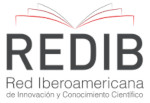Recursos didáticos para a formação de conceitos de probabilidade nos anos iniciais do ensino fundamental
DOI:
https://doi.org/10.17648/diversitas-journal-v6i1-1482Abstract
ABSTRACT: In the history of mathematics, chance has been portrayed at different times. Games of chance served as a basis for understanding chance and Cardano, Pascal and Fermat's ideas about decisions and regularities brought reflections and inquiries about probability. Bernoulli and Laplace confronted chance with determinism and Cornout randomly printed its origin from independent causes, with causes also being the focus of the study of chance by Poincaré, as described by Coutinho. And if, throughout history, the understanding of chance and probability generated different conceptions and ways of understanding them, teaching them in the early years of elementary school is challenging, from the conceptual and procedural point of view and the methodologies to be used. adopted for its approach. Thus, in this work we present the partial results of a research on didactic material for teaching probability in the early years of Elementary School. The National Common Curricular Base recommends teaching the notions of probability in the early years of elementary school and studies carried out by Piaget and Inhelder have already found that children understand the notions of chance and probability in a particular way, and therefore, appropriate approaches with potentially material. contribute to the learning of concepts. Through a systematic literature review, we selected two papers that explain didactic materials for teaching probability in the early years of elementary school, in the games category, one being concrete and the other digital, and we present an analysis of the potential of these materials . Whether through a problematizing character or through a bias more directly linked to the concepts of probability, the games analyzed make it possible to help understand the concepts in a playful and interactive way in the early years of elementary school, in addition to stimulating students' interest in learning and greater participation in mathematics classes.
KEYWORDS: Didactic resources, Probability, Elementary Education.
Metrics
References
BATANERO, C. Didáctica de la estadística. Granada (Espanha): Universidade de Granada / Grupo de Educación Estadística Universidad de Granada-GEEUG, 2001.
BATANERO, C.; GODINO, J. D. Estocástica y su didáctica para maestros.Granada (Espanha): Universidad de Granada (Proyecto Edumat-Maestros), 2002.
BRASIL. Secretaria de Educação Básica. Pacto Nacional pela Alfabetização na Idade Certa: Educação Estatística. Ministério da Educação. Diretoria de Apoio à Gestão Educacional. Brasília: MEC, SEB, 2014.
______.Secretaria de Educação Básica.Base Nacional Comum Curricular. Disponível em:http://basenacionalcomum.mec.gov.br/images/BNCC_EI_EF_110518_versaofinal_site.pdf. Acesso em: 20 jul. 2020.
BRYANT, P.; NUNES, T. Children’sunderstandingofprobability:a literaturereview.Disponível em: https://www.nuffieldfoundation.org/sites/default/files/files/Nuffield_CuP_FULL_REPORTv_FINAL.pdf. Acesso em: 20 jul. 2020.
CIRINO, M. M. A intermediação da noção de probabilidade na construção de conceitos relacionados à cinética química no ensino médio.2007, 201 f. Dissertação (Mestrado em Ensino de Ciências e Matemática) —Faculdade de Ciências de Bauru, Universidade Estadual Paulista, Bauru, SP, 2007.
CONSTANTINO,K. E.; VERRENGIA, S. R. D. Refletindo sobre o ensino de probabilidade e de sua abordagem nos anos iniciais do Ensino Fundamental a partir do jogo “A travessia do Rio”.http://www.eaex.uem.br/eaex2019/anais/artigos/295.pdf.Acesso em: 20 jul. 2020.
COUTINHO, C. Q. S. Conceitos probabilísticos: quais contextos a história nos aponta?. Disponível em: https://periodicos.ufsc.br/index.php/revemat/article/download/12991/12092.Acesso em: 20 jul. 2020.
FISCHBEIN, E.The intuitivesourcesofprobabilisticthinking in children.Dordrecht, The Netherlands: Reidel, 1975.
GODINO, J. D.; BATANERO, M. C.; CAÑIZARES, M. J. Azar y probabilidad:fundamentos didácticos y propuesta curriculares. Madrid,España: Editorial Síntesis, 1996.
LOPES, C.A.E. A probabilidade e a estatística no ensino fundamental:uma análise curricular. 1998. Dissertação (Mestrado em Educação) –Faculdade de Educação, UniversidadeEstadual de Campinas, Campinas, 1998.
______. O ensino da estatística e da probabilidade na educação básica e a formação dos professores.Cad. CEDES,Campinas ,v. 28,n. 74,p. 57-73,Apr.2008 .
MOURA, M. O. A construção do signo numérico em situação de ensino.Tese de Doutorado. São Paulo, SP, Faculdade de Educação, USP, 1992.
NASCIMENTO, J. B. Jogos digitais e probabilidades:uma possibilidade de ensino interdisciplinar. 2018. 90f. Dissertação (Mestrado), Universidade Federal da Paraíba, João Pessoa, 2018.
NUNES, T. et al. Teaching primary school children about probability. Teacherhandbook. Oxford University: London,2012.
PIAGET, J.; INHELDER, B. The orign of idea of chance in children.New York: Norton, 1975.
SAMPAIO, R.F.; MANCINI, M. C. Estudos de revisão sistemática: um guia para síntese criteriosa da evidência científica. Revista Brasileira de Fisioterapia.São Carlos, v. 11, n. 1, p. 83-89, jan./fev. 2007.
SANTOS, J.A. F. L. O movimento do pensamento probabilístico mediado pelo processo de comunicação com alunos do 7º ano do ensino fundamental.2010. Dissertação (Mestradoem Educação) -Universidade São Francisco, Itatiba, 2010.
Downloads
Published
How to Cite
Issue
Section
License
Copyright (c) 2021 Claudia de Oliveira Lozada, Sidney Leandro da Silva Viana, Marcos Lucas da Silva Oliveira, Bruna Gama dos Santos, Cryslane de Araújo Lima, Wilamis Micael de Araújo Aviz

This work is licensed under a Creative Commons Attribution 4.0 International License.
The Diversitas Journal expresses that the articles are the sole responsibility of the Authors, who are familiar with Brazilian and international legislation.
Articles are peer-reviewed and care should be taken to warn of the possible incidence of plagiarism. However, plagiarism is an indisputable action by the authors.
The violation of copyright is a crime, provided for in article 184 of the Brazilian Penal Code: “Art. 184 Violating copyright and related rights: Penalty - detention, from 3 (three) months to 1 (one) year, or fine. § 1 If the violation consists of total or partial reproduction, for the purpose of direct or indirect profit, by any means or process, of intellectual work, interpretation, performance or phonogram, without the express authorization of the author, the performer, the producer , as the case may be, or whoever represents them: Penalty - imprisonment, from 2 (two) to 4 (four) years, and a fine. ”


















